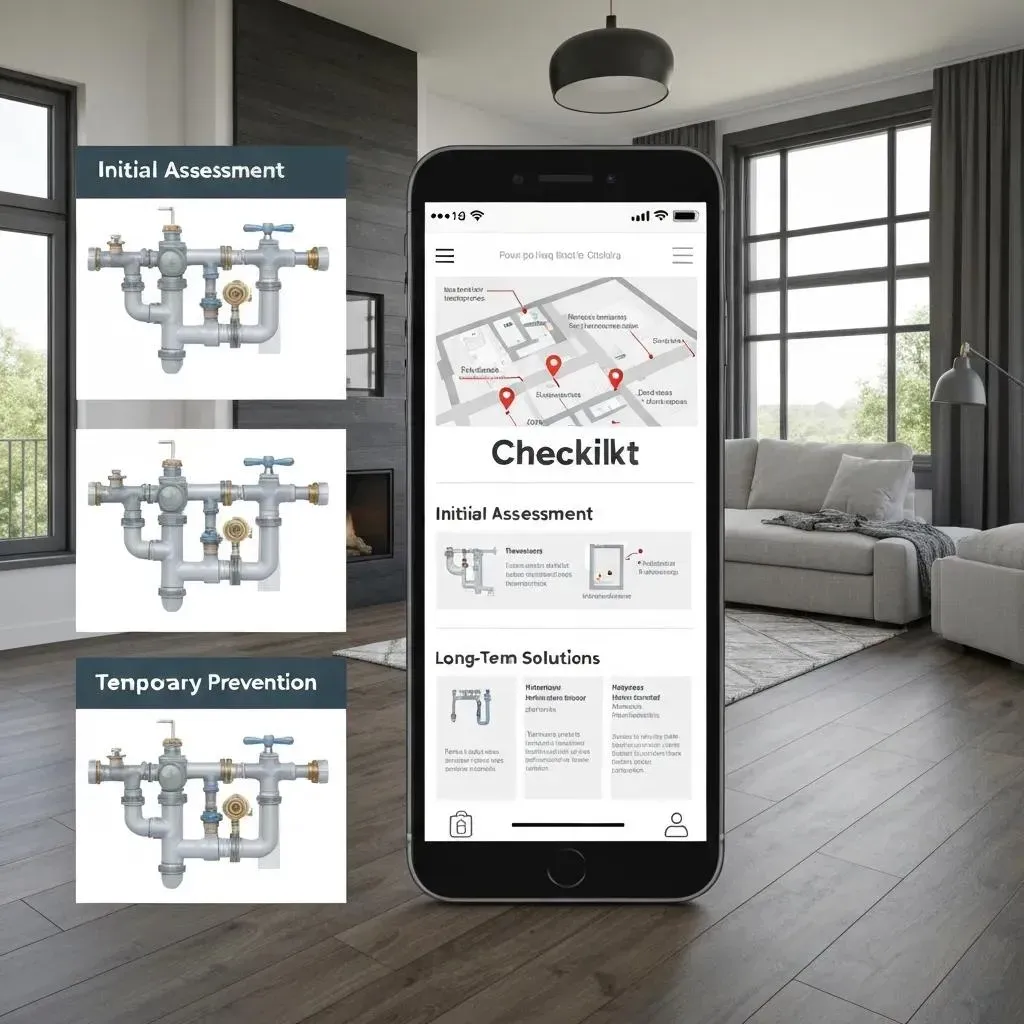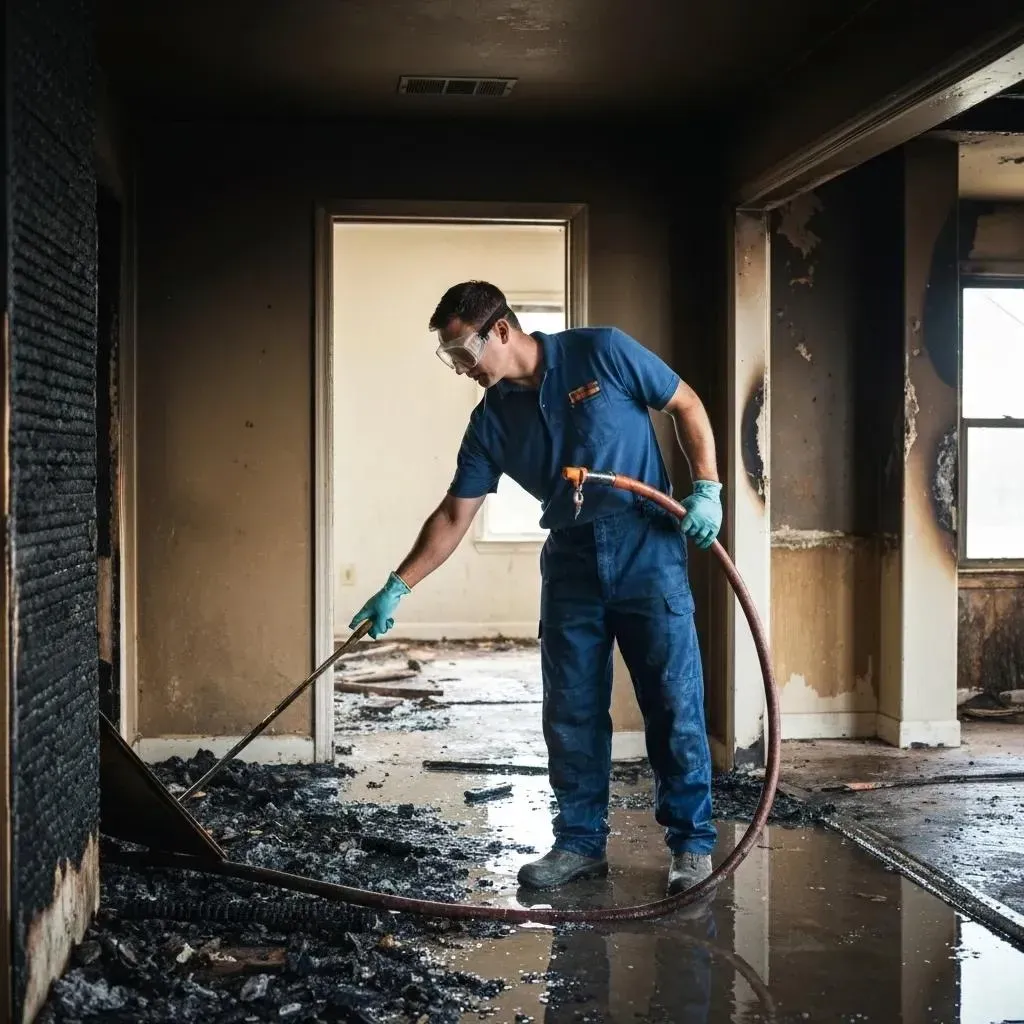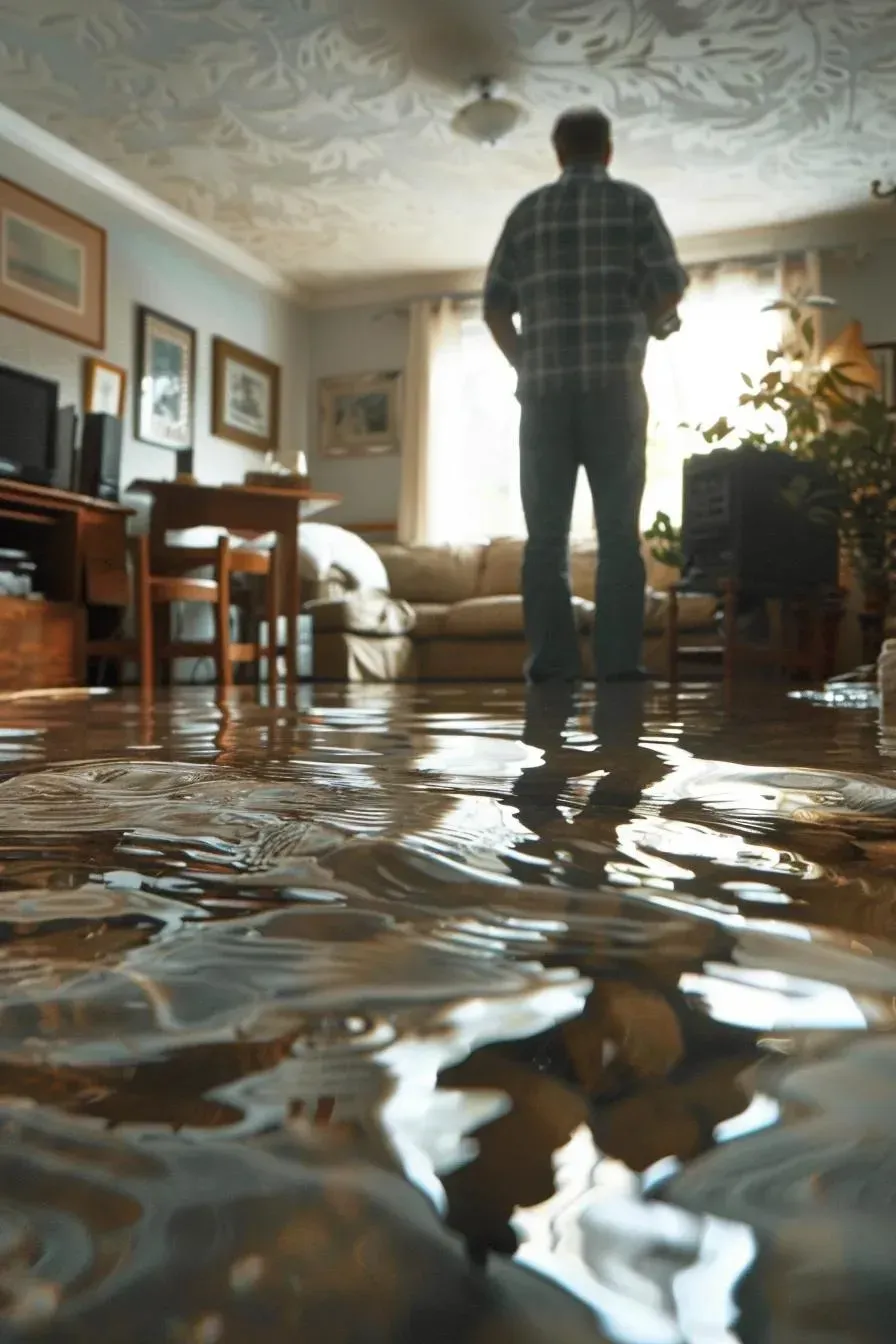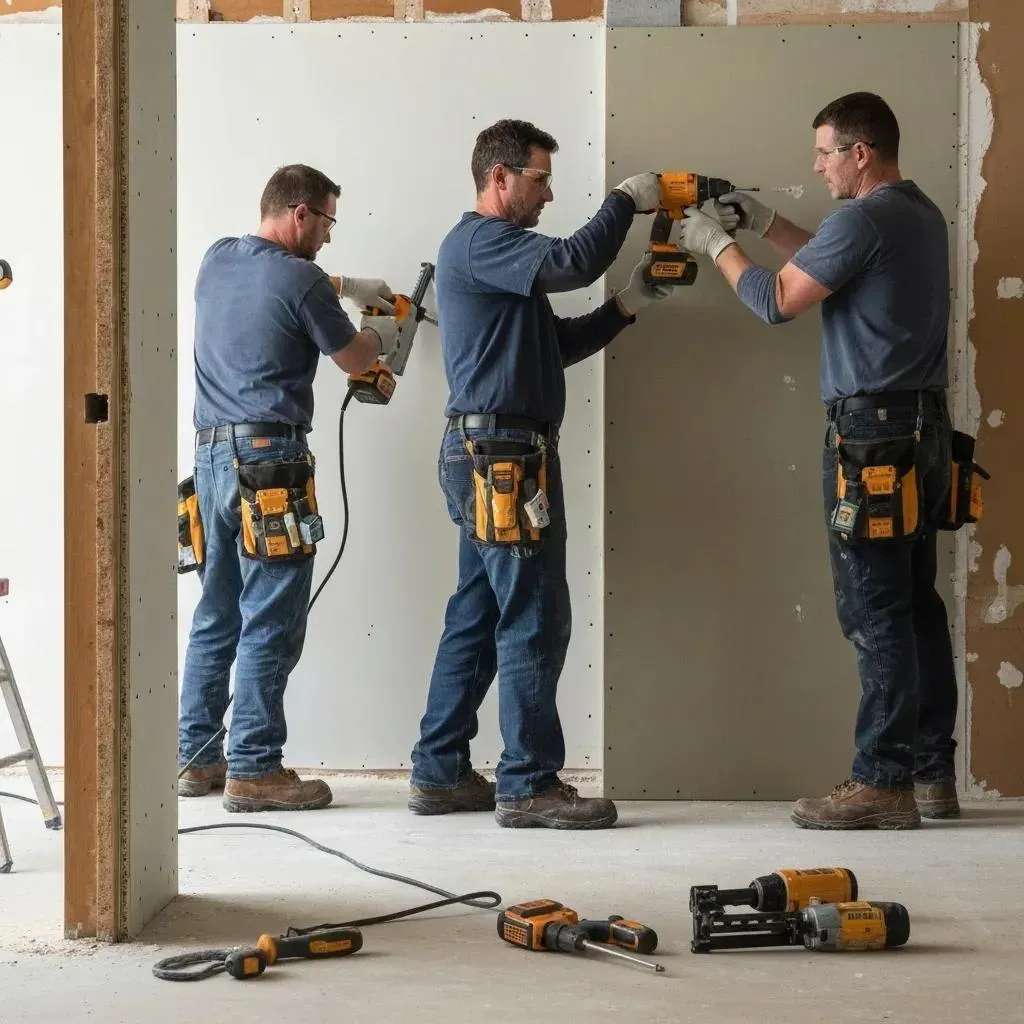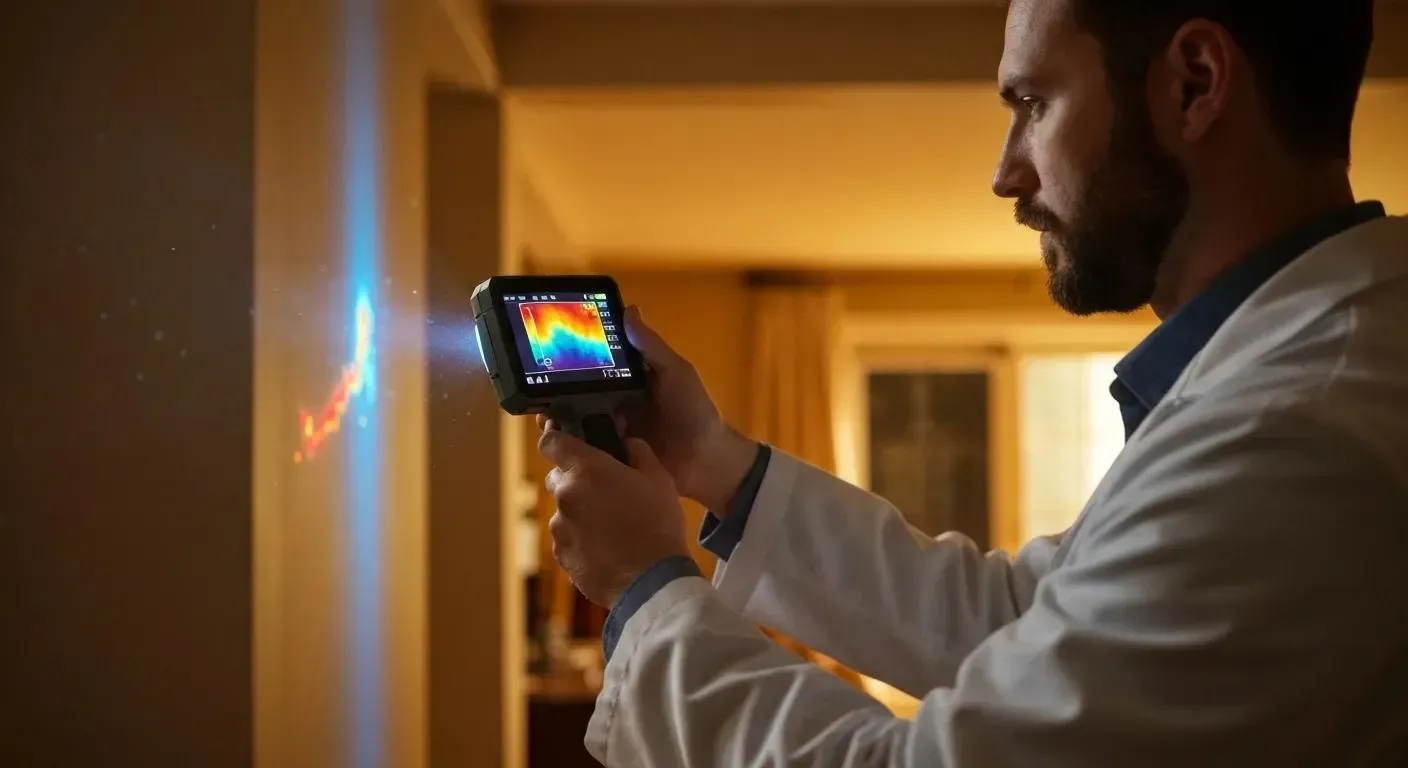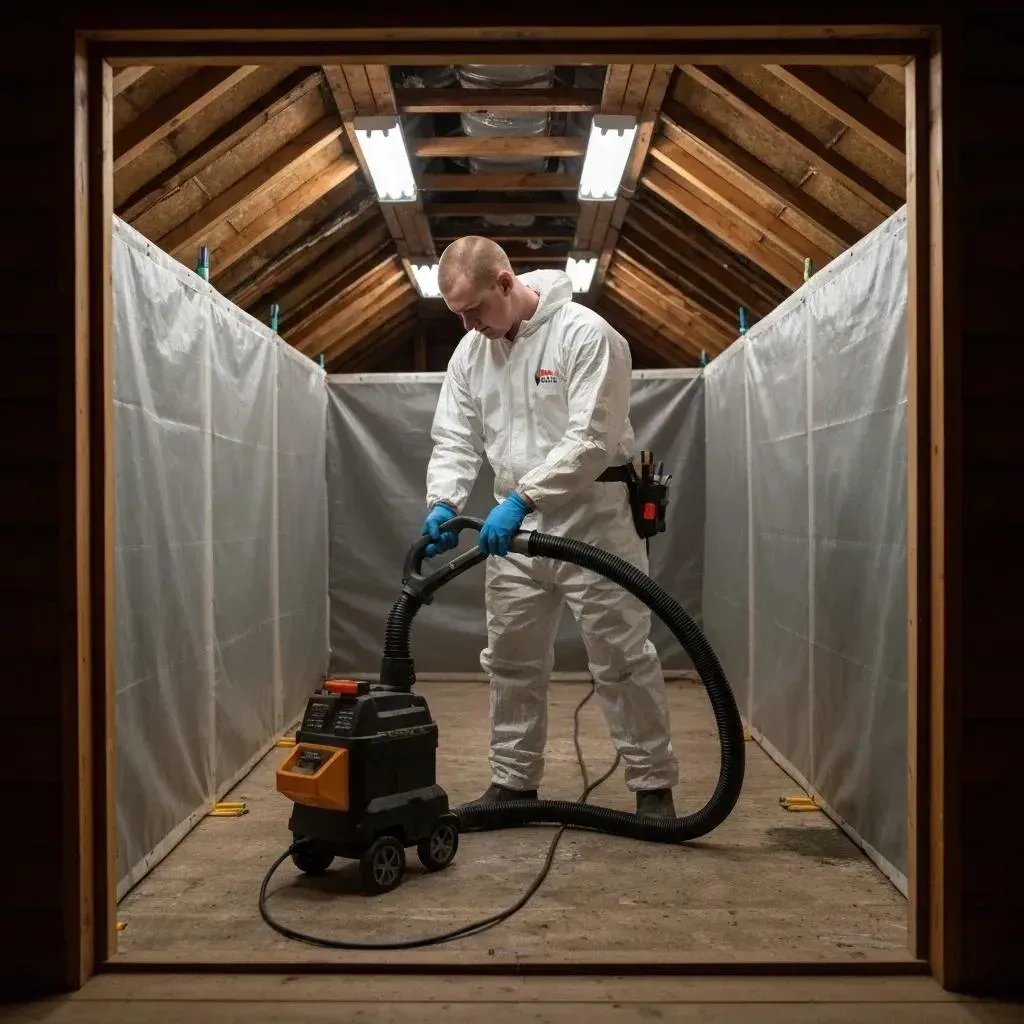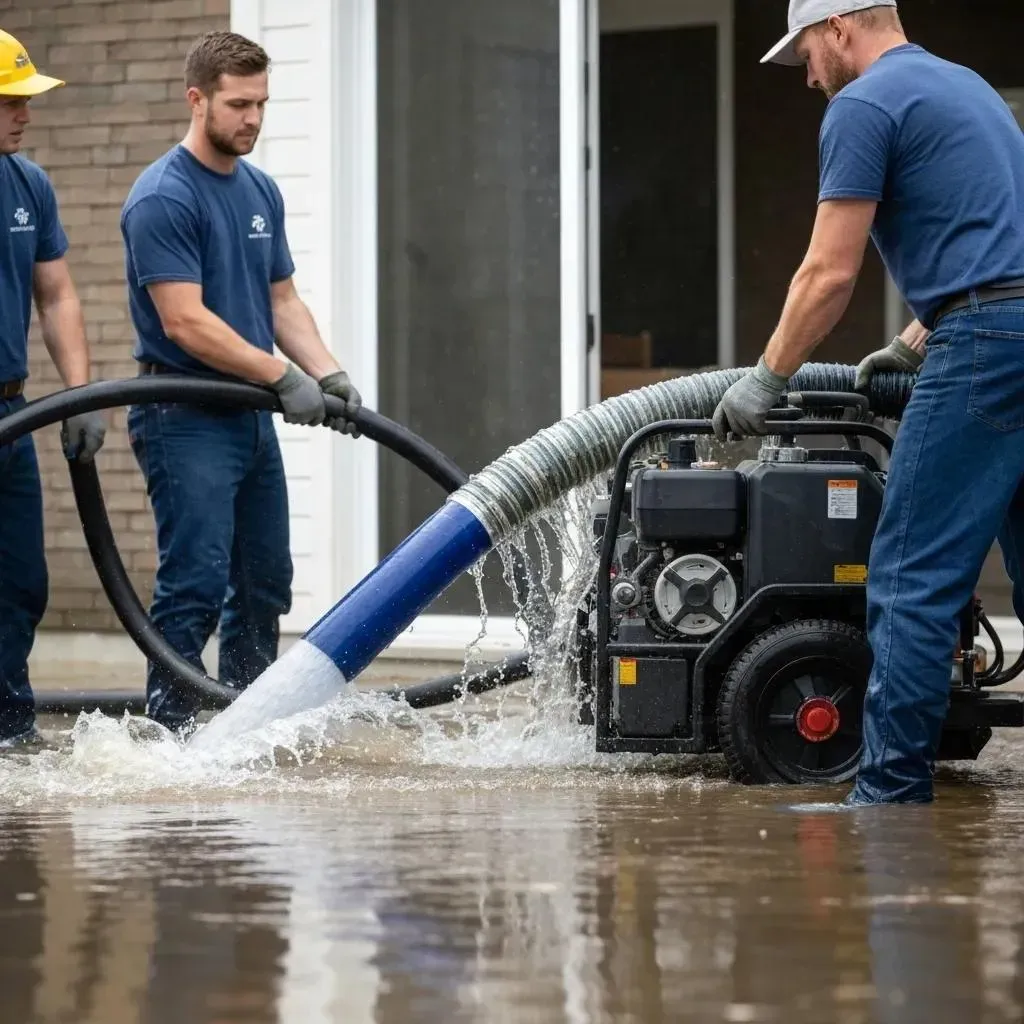Blog
Why Understanding Mold and Asbestos Removal Costs Matters for Denver Homeowners
Mold and asbestos removal cost varies dramatically based on contamination size, location, and type of material involved. Here's what Denver homeowners can expect to pay in 2025:
Quick Cost Overview:
- Mold remediation: $1,500-$9,000 (average $3,500)
- Asbestos removal: $1,191-$3,255 (average $2,211)
- Per square foot: $10-$30 for mold, $5-$20 for interior asbestos
- Testing costs: $200-$1,000 for asbestos, $250-$650 for mold
- Whole-house projects: $15,000-$30,000+
You never expect to find black mold growing behind your bathroom vanity or find asbestos tiles in your basement renovation. But when you do, the clock starts ticking on both your health and your wallet.
These hidden dangers are more common in Denver homes than most people realize. Colorado's dramatic temperature swings and older housing stock create perfect conditions for mold growth, while homes built before 1979 often contain asbestos in insulation, tiles, and siding.
The good news? Professional removal protects your family's health and preserves your home's value. The challenge? Understanding what you'll actually pay and avoiding costly surprises.
I'm Mike Martinez, owner of Accountable Home Services, and I've helped hundreds of Denver families steer mold and asbestos removal cost decisions over the past decade. From emergency mold cleanup to complex asbestos abatement projects, I'll break down exactly what drives these costs and how to budget smartly for clean, safe air in your home.
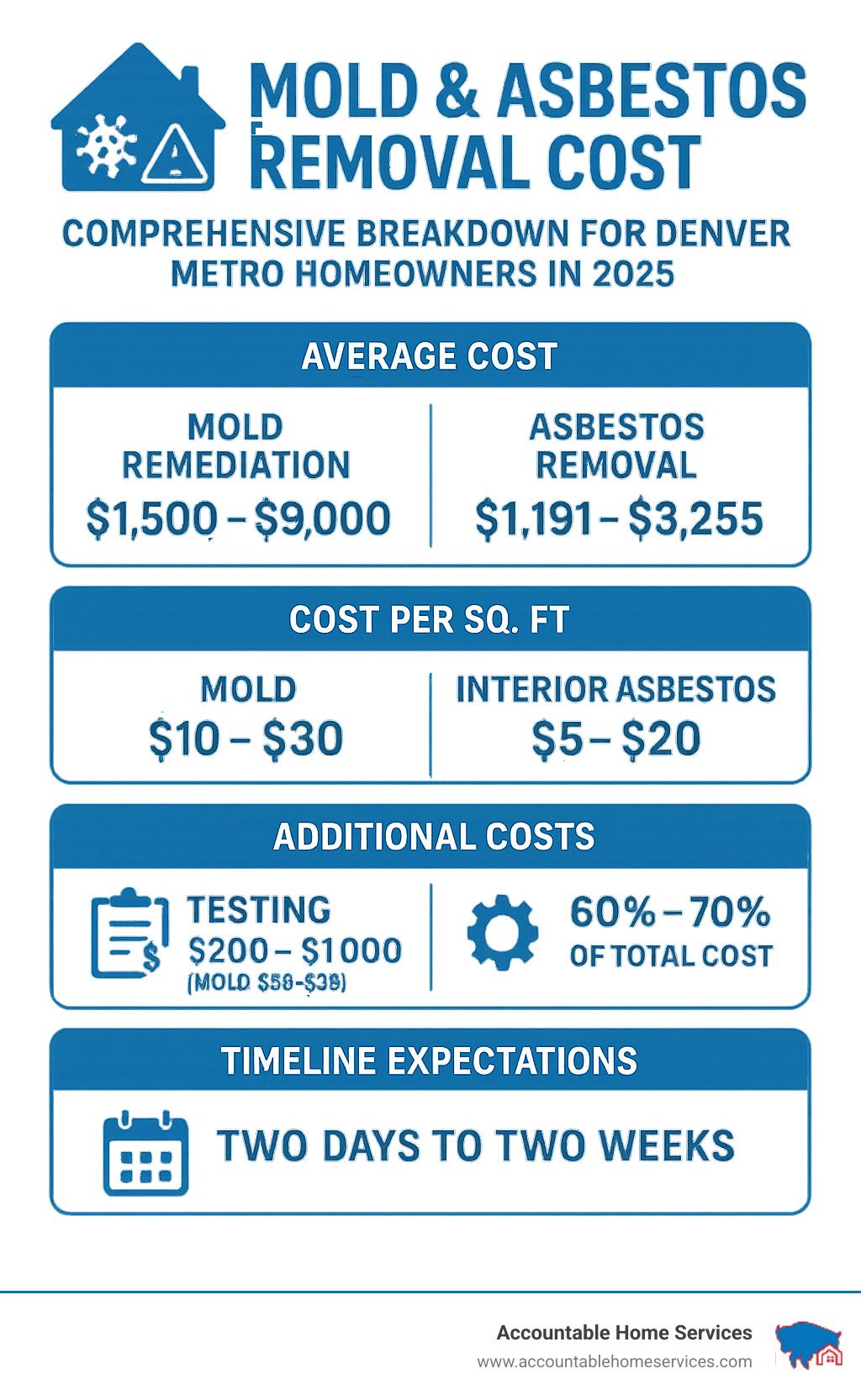
1. Understanding the Hidden Dangers
When it comes to mold and asbestos removal cost, the first thing you need to understand is what you're actually dealing with. These two threats couldn't be more different, yet both can turn your safe haven into a health hazard—and your budget upside down if not handled properly.
Mold is alive and hungry. It's a living fungus that absolutely loves Denver's rollercoaster weather. When spring snowmelt floods your basement or summer humidity meets poor ventilation in your attic, mold spores see an all-you-can-eat buffet. Give them moisture, organic materials like drywall or carpet, and our dramatic temperature swings, and they'll set up shop within 48 hours.
I've seen mold turn a small bathroom leak into a $5,000 remediation project because the homeowner thought those black spots would just "dry out on their own." Spoiler alert: they don't.
Asbestos, on the other hand, is the silent threat. This mineral fiber was the "miracle material" of mid-20th century construction—fire-resistant, durable, and cheap. Unfortunately, we didn't know until decades later that when disturbed, it releases microscopic fibers that can cause lung cancer, mesothelioma, and other serious respiratory diseases. According to scientific research on asbestos health effects, there's no safe level of exposure.
Here in Denver, we deal with two main types. Friable asbestos crumbles easily and is found in pipe insulation, boiler wrapping, and some of those popcorn ceiling textures that seemed like a good idea in 1975. Non-friable asbestos is more stable and typically lurks in floor tiles, siding, and roofing materials.
The health risks are no joke. Mold exposure can trigger everything from seasonal allergies to serious asthma attacks and respiratory infections. Some toxic molds produce mycotoxins that may cause neurological issues. Asbestos exposure is even scarier because it can remain dormant for decades before causing life-threatening diseases.
1.1 How to Tell If You Have a Problem
Your nose often knows first. That persistent musty odor that doesn't go away after cleaning? That's mold saying hello. Visually, you're looking for fuzzy growth in various colors—black, green, white, or gray spots that seem to spread. Discoloration on walls or ceilings, peeling paint or wallpaper, and warped or buckling surfaces are all mold's calling cards.
Asbestos is trickier because it masquerades as normal building materials. If your home was built before 1979, be suspicious of popcorn ceiling textures, 9x9 inch floor tiles, pipe and duct insulation, cement siding, and certain roofing materials.
Here's where many homeowners make expensive mistakes: they guess. Professional testing saves money in the long run because it tells you exactly what you're fighting. Our Mold Inspection service uses air sampling, surface sampling, and bulk sampling to get the complete picture. We also use infrared cameras and moisture meters to find hidden problems before they explode your budget.
For asbestos, we collect samples of suspect materials and send them to certified laboratories. Yes, this costs $200-$1,000 depending on how many samples we need, but it's the difference between a $2,000 targeted removal and a $15,000 whole-house abatement project. Trust me, testing is the smartest money you'll spend when planning your mold and asbestos removal cost budget.
2. Mold and Asbestos Removal Cost in 2025
Here's what no one wants to hear: mold and asbestos removal cost has jumped significantly in 2025. Between supply chain disruptions, tighter EPA regulations, and increased demand from homeowners finally tackling postponed projects, we're seeing prices climb 10-15% from last year.
Denver pricing typically runs higher than national averages—about 5-10% more—thanks to our elevation challenges, dramatic weather swings, and some of the strictest remediation regulations in the country. But here's the reality check you need for budgeting this year.
For mold remediation, you're looking at $1,500 to $9,000 for most residential projects, with the sweet spot around $3,500 for an average-sized problem. Small bathroom mold issues might cost $500-$1,500, while a basement disaster after spring flooding can easily hit $6,000-$30,000.
Asbestos removal typically ranges from $1,191 to $3,255 for smaller projects, but whole-house abatement can reach $15,000-$30,000. The average homeowner spends about $2,211, though that number climbs quickly if you're dealing with roofing or siding materials.
Don't forget testing fees—they're separate but essential. Mold testing runs $250-$650 for basic inspections, while comprehensive testing can reach $400-$800. Asbestos testing costs $200-$1,000+ depending on how many samples we need to collect.
The choice between encapsulation versus removal can save you serious money. Encapsulation—essentially sealing asbestos materials in place—costs just $2-$6 per square foot compared to $5-$20 for full removal. However, encapsulation isn't always legal during renovations, and it's not a permanent solution.
Disposal permits add another $50-$100 to most projects, while actual disposal fees range from $10-$50 per cubic yard for contaminated materials. These costs have increased this year as disposal facilities face their own regulatory pressures.
2.1 Average Mold and Asbestos Removal Cost Per Square Foot
When contractors start throwing around square footage numbers, you need to know what's reasonable. Mold remediation typically costs $10-$30 per square foot, but that range depends heavily on what's involved. Simple surface cleaning and treatment might only cost $10-$15 per square foot, while full remediation requiring material removal and replacement can reach $20-$30 per square foot.
Asbestos removal pricing gets more complex. Interior locations like floor tiles or pipe insulation typically cost $5-$20 per square foot. But exterior work—think roof shingles or siding—jumps dramatically to $50-$150 per square foot because of the containment challenges and specialized equipment needed for outdoor projects.
Complex areas like HVAC ductwork fall somewhere in between at $35-$55 per square foot, reflecting the technical difficulty of accessing and properly containing these systems.
Here's how your money breaks down: labor accounts for 60% of the total cost because this work requires certified technicians following strict safety protocols. Equipment represents 20%—those HEPA vacuums, negative air machines, and protective gear aren't cheap to buy or maintain. The remaining 20% covers materials like specialized disposal bags, sealants, and any replacement materials needed.
The higher cost for exterior asbestos work isn't contractor markup—it's reality. Containing asbestos fibers outdoors requires extensive sheeting, weather protection, and specialized scaffolding that interior jobs simply don't need.
2.2 Mold and Asbestos Removal Cost by Home Location
Where the problem lives in your house dramatically affects what you'll pay. Attic mold removal typically costs $1,000-$7,000 because limited access slows everything down, insulation usually needs replacement, and we often find ventilation problems that must be fixed to prevent recurrence.
Basement mold remediation ranges from $500-$4,000, but the real cost often comes from addressing the underlying moisture issues. You might need foundation waterproofing, dehumidification systems, or extensive structural drying that extends well beyond the visible mold.
Drywall mold problems can cost $1,000-$20,000 depending on how far the contamination has spread behind the walls. Once we start opening up walls, we sometimes find electrical or plumbing complications that add time and complexity to the project.
HVAC system contamination is particularly expensive at $3,000-$10,000 because mold in your ductwork has likely spread throughout your entire house. We have to shut down your system during cleaning and often replace filters, dampers, and other components.
For flooring issues, mold-damaged carpet removal typically costs $775-$2,600, while asbestos floor tiles follow the square footage pricing we discussed earlier. Don't forget that subfloor treatment is often necessary, adding to the total cost.
Siding and roofing represent the most expensive asbestos projects at $50-$150 per square foot due to height, weather exposure, and the complex containment required for outdoor work. These projects also require additional permits and inspections that interior work doesn't need.
Our Asbestos Removal Services team has tackled projects in every corner of Denver homes, from cramped crawl spaces to steep rooflines. Every location presents unique challenges, which is why we always provide detailed, location-specific assessments before starting any work.
3. Key Factors That Influence Your Budget

Here's something that surprises many homeowners: the size of contaminated area might seem like the obvious cost driver, but I've seen tiny 5-square-foot jobs cost more than 50-square-foot projects. Why? Because mold and asbestos removal cost depends on much more than just square footage.
Think of it like home repairs—fixing a leaky pipe behind an easily accessible wall is straightforward, but that same leak behind a finished basement wall with electrical work? That's a completely different project. The same principle applies to remediation work.
Contaminated area size does matter, of course. Projects under 10 square feet often qualify for careful DIY mold removal (never attempt DIY asbestos work). Once you hit 10-100 square feet, professional help becomes essential, and anything over 100 square feet requires full containment protocols that significantly increase costs. Whole-house contamination means we're staging the work over weeks, which affects both timeline and budget.
But here's where things get interesting. Accessibility challenges can easily double your labor costs. I've worked in crawl spaces where technicians can barely move, requiring specialized equipment and extra safety protocols. High ceilings mean scaffolding and fall protection gear. Tight spaces between walls slow everything down. Multiple rooms? Each one needs its own containment zone.
Species and material type also drive safety requirements and disposal costs. Finding toxic black mold means our team needs upgraded protective equipment. Friable asbestos demands the most stringent containment protocols we have. When you're dealing with both mold and asbestos in the same project, you might need separate specialists, which affects scheduling and coordination costs.
Project scope determines everything from equipment needs to timeline. Emergency response work carries premium pricing because we're mobilizing teams immediately. Structural repairs can add thousands to your budget. HVAC system involvement increases complexity exponentially because contamination can spread throughout your entire home. And don't forget post-remediation repairs and reconstruction—sometimes removing contaminated materials means rebuilding walls, replacing flooring, or repainting entire rooms.
In the Denver Metro area, urban permits add both time and cost to most projects. Permit fees typically run $50-$100, but the real impact comes from inspection requirements, neighbor notification procedures, and disposal facility approvals that can extend your timeline by days or weeks.
3.1 Testing & Inspection Costs
Professional testing might feel like an extra expense, but it prevents costly mistakes and ensures you're solving the right problem. I can't tell you how many homeowners have called us thinking they had a mold issue, only to find it was actually water damage that needed a completely different approach.
Our Asbestos Testing service starts with understanding what we're analyzing. Lab fees vary significantly by test type—basic asbestos sample analysis runs $25-$75 per sample, while comprehensive mold air sampling costs $40-$100 per sample. Need results quickly? Rush processing adds a 50-100% premium, but sometimes that speed is worth every penny when you're dealing with health concerns.
Sample count depends entirely on your project scope. Single-room projects typically need 2-3 samples to get accurate results. Whole-house assessments require 6-12 samples to map contamination patterns properly. Commercial properties often need 15 or more samples due to their size and complexity.
Third-party inspection provides unbiased results that insurance companies trust. Independent inspectors typically charge $400-$800 for residential properties, including lab fees and detailed reports. While this seems expensive upfront, having credible documentation can save thousands in disputes later.
The testing process actually happens twice. Pre-remediation testing identifies exactly what you're dealing with ($200-$400), and post-remediation clearance testing confirms the job is complete ($200-$400). Air quality verification adds another $100-$300, but this final step protects your family's health and your investment.
3.2 Removal vs Encapsulation
Here's a money-saving option many homeowners don't know about: encapsulation can reduce asbestos project costs by 15-25% when conditions allow. Instead of removing asbestos materials, this process seals them with specialized sealants to prevent fiber release.
Encapsulation works best when materials are in good condition, no renovation is planned, the area remains accessible for future monitoring, and local codes permit this approach. Sealant costs run $2-$6 per square foot compared to $5-$20 for full removal—significant savings on larger projects.
But there's a catch. Longevity considerations mean encapsulation requires ongoing monitoring and eventual removal anyway, so you're often just postponing the expense. However, for intact materials in stable conditions, quality encapsulation can provide decades of safe containment.
Legal requirements vary by location and project type. The EPA cleanup guidance provides federal standards, but Denver Metro communities often have more restrictive local codes. During renovations, encapsulation usually isn't an option—disturbing encapsulated materials means full removal becomes necessary anyway.
The decision between removal and encapsulation should always involve professional assessment. What looks like a cost-saving measure today might become a more expensive problem tomorrow if your family's plans change or local regulations tighten.
4. Professional Process vs. DIY: What Really Happens
When I tell homeowners about professional mold and asbestos removal cost, many wonder if they can tackle the job themselves to save money. I get it—nobody likes unexpected expenses. But here's the reality: the difference between professional and DIY remediation isn't just about cost. It's about protecting your family's health, ensuring legal compliance, and actually solving the problem for good.
Professional abatement follows strict protocols that might seem excessive until you understand what we're really fighting. Containment zones aren't just plastic sheets thrown over furniture. We create engineered barriers with overlapping seams, sealed penetrations, and controlled access points that prevent even microscopic particles from escaping the work area.
The heart of our containment system is negative air pressure. Our industrial machines process 1,000-2,000 cubic feet of air per minute through HEPA filters that capture 99.97% of particles down to 0.3 microns. That's smaller than most bacteria. We create airlocks and decontamination chambers because contamination doesn't respect good intentions—it follows physics.
HEPA vacuums are another non-negotiable. I've seen homeowners use shop vacuums thinking they're helping, but standard vacuums actually spread contamination by exhausting unfiltered air. Real HEPA equipment costs $500-$2,000 per unit, and we maintain multiple machines because cross-contamination between jobs isn't acceptable.
Our crew's personal protective equipment includes full-face respirators with P-100 filters, disposable coveralls with integrated hoods and booties, double-layer gloves, and eye protection. It looks like a hazmat scene because, frankly, that's exactly what it is.
Timeline varies dramatically based on scope. Small mold jobs typically take 1-2 days, while medium projects require 3-5 days. Large abatement projects can stretch 1-2 weeks, and whole-house remediation might take 2-4 weeks. The timeline isn't just about removal—it includes proper setup, methodical work, and thorough cleanup.
Certifications aren't just wall decorations. Our team maintains IICRC and NORMI credentials, state licensing, and OSHA training documentation. These certifications ensure we follow current best practices and provide the documentation your insurance company expects.
4.1 Step-by-Step Professional Abatement Workflow
Our Mold Removal and Remediation process has been refined through hundreds of projects. Setup begins with turning off HVAC systems to prevent spore circulation throughout your home. We establish containment barriers using 6-mil plastic sheeting, install negative air machines, and verify proper pressure differentials with specialized gauges.
The decontamination chamber and tool staging area get set up outside the work zone. We document pre-conditions with photos and air sampling because proper documentation protects both you and us if questions arise later.
During the removal phase, we dampen materials to minimize fiber release—dry removal creates dangerous airborne particles. Contaminated materials get removed using hand tools rather than power equipment that could spread contamination. Everything goes into double-bagged, labeled disposal containers.
HEPA vacuuming follows removal, cleaning all surfaces methodically. We apply antimicrobial treatments where appropriate, though proper removal and moisture control are more important than chemical treatments.
Disposal involves transporting waste to certified facilities with complete manifests and tracking documentation. We provide disposal certificates for your insurance and legal records.
Clearance testing by an independent third party includes visual inspection, air sampling to verify safe levels, and surface sampling in sensitive areas. The documentation package we provide gives you confidence the job was completed properly.
Most residential projects complete within one week, though complex cases take longer. We'd rather do it right than do it fast.
4.2 When DIY Makes Sense – and When It Doesn't
The EPA provides clear guidance about DIY mold cleanup: areas under 10 square feet might be suitable for homeowner treatment, assuming you have no health sensitivities and proper protective equipment. However, asbestos should never be a DIY project—period.
For small mold areas, you'll need an N95 respirator (minimum protection), goggles without ventilation holes, long gloves extending to mid-forearm, and disposable coveralls. The safe approach involves fixing the moisture source first, isolating the work area with plastic sheeting, using detergent and water rather than bleach on porous materials, drying thoroughly within 24-48 hours, and disposing of contaminated materials properly.
But here's when you absolutely need professionals: any asbestos-containing materials, mold areas larger than 10 square feet, sewage or contaminated water involvement, HVAC system contamination, health conditions like asthma or immune deficiencies, and recurring mold problems.
The legal risks of improper DIY work are serious. EPA fines for asbestos violations can reach $25,000 per day. State health departments impose additional penalties. Insurance companies may deny claims for improper remediation. You could face liability for neighbor exposure, and real estate disclosure complications can haunt you for years.
The EPA guidance on removing mold yourself emphasizes that larger projects require professional expertise and equipment that simply isn't available to homeowners. When clients ask about DIY approaches, I remind them that mold and asbestos removal cost includes not just the immediate work, but the peace of mind that comes from knowing it was done safely and completely.
5. Financing, Insurance & Money-Saving Tips

Let's be honest—nobody budgets for mold and asbestos removal cost when they're planning their year. These problems show up uninvited, often at the worst possible time. But here's the good news: you have more options for managing these costs than you might think.
Homeowners insurance can be your best friend or your biggest frustration, depending on what caused the contamination. The key word here is "sudden." If a pipe bursts and causes mold growth, you're likely covered. If you've had a slow leak for months that finally created a mold problem, you're probably on your own.
Insurance companies typically cover sudden pipe bursts, appliance leaks, storm damage, and fire-related asbestos abatement during reconstruction. What they don't cover are the problems we could have prevented—long-term maintenance issues, flood damage (that requires separate flood insurance), pre-existing conditions, and preventive removal when there's no actual damage.
The trick is documentation. Take photos of everything, get professional inspection reports, and keep detailed records of any emergency measures you take. I've seen claims approved and denied based purely on how well homeowners documented their situation.
FEMA grants become available after declared disasters, particularly when asbestos removal is required during reconstruction. These grants don't need to be repaid, but you must apply within 60 days of the disaster declaration. Colorado also has various state and local programs that occasionally offer assistance—low-income weatherization programs, health department emergency funds, and housing rehabilitation loans that sometimes include remediation work.
5.1 Grants & Assistance Programs
FEMA Individual Assistance provides grants up to $37,000 for disaster-related home repairs, including mold and asbestos remediation when it's part of eligible damage. The application window is tight—just 60 days after a disaster declaration—so don't wait if you qualify.
HUD Community Development Block Grants fund housing rehabilitation in qualified communities throughout the Denver Metro area. These programs often include lead and asbestos abatement for low-to-moderate income homeowners. The income requirements typically mean you need to earn less than 80% of the area median income, but the assistance can be substantial.
Colorado's Department of Public Health and Environment maintains current programs that occasionally offer emergency assistance for health hazards. It's worth checking their website or calling if you're facing immediate health risks from contamination.
Tax credits for energy efficiency improvements might apply when remediation is part of broader home upgrades. If you're adding insulation after asbestos removal or installing better ventilation after mold remediation, you could qualify for federal and state incentives. Definitely consult a tax professional about current opportunities.
5.2 Cost-Cutting Checklist
The smartest money-saving strategy? Fix leaks first. I can't tell you how many times I've seen homeowners spend thousands on mold cleanup, only to have the problem return because they never addressed the underlying moisture issue. A $200 plumbing repair can prevent repeated mold and asbestos removal cost down the road.
Controlling humidity is your next line of defense. Install bathroom fans sized at 1 CFM per square foot, run basement dehumidifiers to maintain 30-50% relative humidity, and consider whole-house ventilation systems if you have recurring problems. These investments pay for themselves by preventing future contamination.
Bundling projects can reduce your overall costs significantly. If you need both mold remediation and renovation work, coordinating these projects can save 10-15% on total costs because contractors don't have to mobilize twice. We often work with homeowners to combine remediation with planned improvements.
Timing matters more than most people realize. Off-season scheduling during fall and winter may offer 5-10% discounts when contractors have lighter schedules. Multiple bids ensure competitive pricing, but remember to focus on scope and qualifications rather than just the lowest price—we've seen too many low-bid projects that excluded necessary work or used unqualified contractors.
Preventive measures add minimal cost to renovation projects but provide long-term protection. Mold-resistant paint and primers cost just $25-$35 more per gallon than standard paint. Vapor barriers in crawl spaces and basements prevent moisture intrusion—professional installation costs $1,500-$15,000 depending on area size, but it prevents recurring problems that would cost much more to address repeatedly.
Our Certified Mold Inspector Near Me service can help identify problems early when remediation costs are lowest. It's always cheaper to catch these issues before they become major health hazards or structural problems.
6. Real-Estate Impact & Knowing When to Call the Pros
When it comes to buying or selling a home in Denver, mold and asbestos removal cost becomes more than just a repair expenseait's a major factor in property value and legal liability. Understanding these impacts helps you make smart decisions whether you're preparing to sell or dealing with a finding during purchase.
Property disclosures aren't optional in Colorado. State law requires sellers to reveal known material defects, and trust me, trying to hide mold or asbestos problems will come back to haunt you. Many buyers now specifically request mold and asbestos inspections as part of their due diligence, especially for homes built before 1979.
The financial impact on your home value depends on the severity and how you handle it. Minor mold issues typically reduce value by 1-5%, while significant contamination can slash your home's worth by 5-15%. But here's the kicker: if buyers find undisclosed problems during their inspection, you're looking at 15% or more in value reduction plus potential legal headaches that can drag on for months.
I've seen sellers panic when buyers find problems during inspection, leading to rushed decisions and inflated costs. Pre-sale inspections flip this dynamic in your favor. By identifying and addressing issues before listing, you control the timeline and costs rather than negotiating under pressure. Plus, a clean bill of health from a professional inspection often justifies your asking price.
Buyer negotiations become much smoother when you have professional estimates in hand. Instead of arbitrary discounts based on fear, you're dealing with concrete numbers. A $3,000 remediation estimate gives both parties a clear framework for price adjustments.
The legal liabilities for undisclosed contamination extend far beyond the sale price. Colorado courts have upheld buyers' rights to contract rescission, damage claims for health impacts, and recovery of attorney fees. Some sellers have faced ongoing obligations for monitoring and cleanup costs that far exceeded their original sale profits.
6.1 Hiring Checklist for Denver Homeowners
Finding the right contractor can feel overwhelming, especially when you're dealing with health hazards and insurance claims. Focus on credentials first, price second. A cheap contractor who cuts corners often costs more in the long run through failed work, insurance claim denials, or legal problems.
Licenses and insurance form your foundation of protection. Verify the contractor holds a Colorado contractor's license where required, along with IICRC certification for water damage and mold work. Look for NORMI or NAMP credentials specifically for mold remediation, and ensure they carry EPA RRP certification for lead-safe work practices. Don't skip insurance verificationdemand proof of current workers' compensation and general liability coverage with at least $1 million limits.
References tell the real story of a contractor's work quality. Ask for recent projects similar to yours and actually call those homeowners. Check if they've worked with insurance companies on claims like yours, and review their Better Business Bureau rating alongside online reviews from multiple sources. A pattern of complaints about incomplete work or communication problems should send you elsewhere.
The written scope separates professional contractors from fly-by-night operators. Demand detailed documentation of specific areas to be addressed, containment and safety procedures, disposal methods and locations, and a realistic timeline with milestones. The proposal should include post-remediation testing requirements and clear warranty terms. If a contractor can't provide this level of detail upfront, they probably can't deliver quality work either.
Timeline expectations should align with industry standards. Small projects typically complete in 1-3 days, medium projects require 3-7 days, and large projects may take 1-3 weeks. For emergencies, professional companies should begin within 24-48 hours, but be wary of anyone promising unrealistic completion times.
Warranty coverage protects your investment long-term. Insist on a workmanship guarantee of at least one year, material defect coverage, and callback service for any issues. Make sure warranty terms clearly explain the claims process and what's covered.
Our Professional Asbestos Removal Company maintains all required certifications and provides comprehensive warranties because we stand behind every project we complete.
6.2 Frequently Asked Questions about Mold and Asbestos Removal Cost
How long does remediation actually take? Most residential projects wrap up in 2-7 days depending on contamination size and complexity. We can start emergency response within 24 hours, but proper remediation requires careful setup and safety protocols that can't be rushed. Cutting corners on containment or safety to finish faster often leads to incomplete work and recurring problems.
Can my family stay in the house during work? For small, contained projects, absolutely. Larger jobs often require temporary relocation, especially when we're working on HVAC systems or dealing with toxic mold varieties. We never compromise on family safety for convenienceif there's any doubt, we'll recommend alternative accommodations and help coordinate with your insurance for coverage.
Will insurance actually cover these costs? Coverage depends heavily on what caused the contamination and your specific policy language. Sudden water damage leading to mold is often covered, while long-term maintenance issues typically aren't. Pre-existing asbestos removal rarely gets coverage unless it's part of covered damage repairs. We work directly with insurance companies and can help steer the claims process to maximize your coverage.
Is it really safe to leave asbestos alone? Undisturbed asbestos in good condition poses minimal immediate risk. However, any renovation, repair, or natural deterioration can release dangerous fibers into your home's air. Professional assessment determines when removal is necessary versus when encapsulation or monitoring makes sense. Never assume it's safe to disturb asbestos materials during DIY projects.
What about mold that keeps coming back? Recurring mold always indicates unresolved moisture issues. Simply removing visible mold without addressing the underlying cause wastes your money and time. Professional remediation includes moisture source identification and long-term prevention recommendations. We often find that a $200 plumbing repair prevents thousands in repeated cleanup costs.
How do I verify the work was done right? Independent post-remediation testing by a different company than performed the work provides unbiased verification. Air sampling should show mold spore levels within normal ranges for your area, and visual inspection should confirm complete removal of contaminated materials. We always recommend third-party clearance testing because it protects both you and us.
Conclusion
When you find mold growing behind your bathroom vanity or find those suspicious-looking tiles in your basement, the mold and asbestos removal cost might feel overwhelming. But here's the truth: clean air is an investment in your family's future, not just another home expense.
The numbers we've covered$1,500 to $30,000 depending on your project scoperepresent more than just remediation costs. They're protecting your family from respiratory disease, safeguarding your children's long-term health, and preserving what's likely your largest financial investment.
Denver's unique challenges make local expertise essential. Our dramatic temperature swings create perfect conditions for mold growth, while our older housing stock means asbestos lurks in unexpected places. Generic solutions from out-of-state companies simply don't understand how altitude affects building materials or why Colorado's dry climate can suddenly turn into a moisture nightmare.
As a family-owned company that's called Denver home for over a decade, we've seen how these findings affect real families. The stress of finding contamination, the worry about health impacts, the uncertainty about costswe get it because we've been there with hundreds of your neighbors.
That's exactly why we provide transparent pricing from day one, work directly with your insurance company to minimize out-of-pocket costs, and maintain 24/7 emergency response. Because when your family's safety is on the line, you shouldn't have to wait until Monday morning or wonder if you can afford to breathe safely.
The bottom line is simple: Professional remediation might cost thousands, but DIY mistakes cost far more. We've seen homeowners spend twice as much fixing botched cleanup jobs, face legal liability for spreading contamination, and worst of all, continue exposing their families to health hazards they thought they'd eliminated.
Our certified technicians don't just remove contaminationwe restore your peace of mind. Every project follows strict safety protocols, uses cutting-edge equipment, and includes thorough post-remediation testing. We're not satisfied until your home's air quality meets the same standards we'd demand for our own families.
Ready to breathe easier and move forward with confidence? Contact Accountable Home Services today for a comprehensive assessment and completely transparent cost estimate. Because when it comes to the air your family breathes every day, there's simply no room for shortcuts or second-guessing.
For complete details about our comprehensive services and how we can help restore your home safely, visit our Asbestos Removal page or call us for immediate assistance. Your family's health and safety are always worth the investment in professional remediation.

